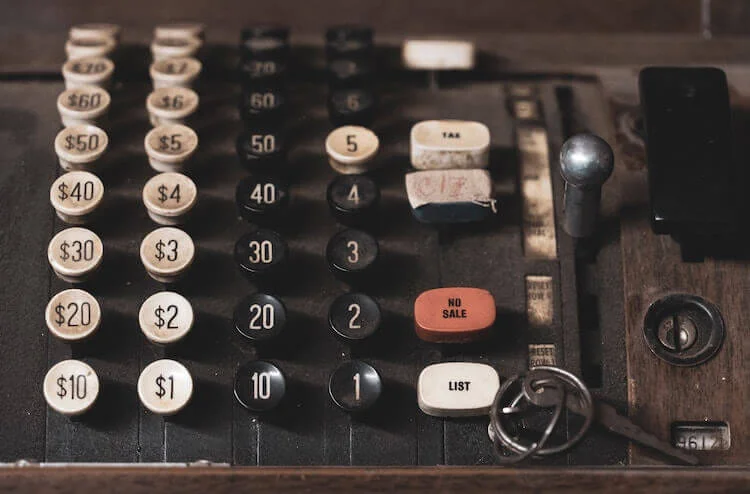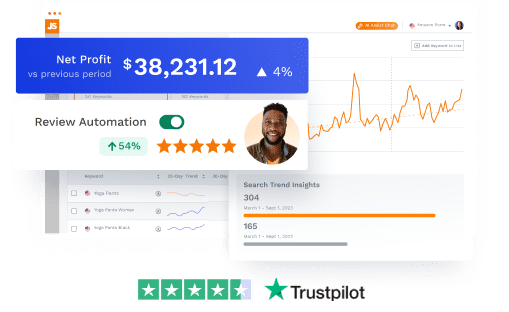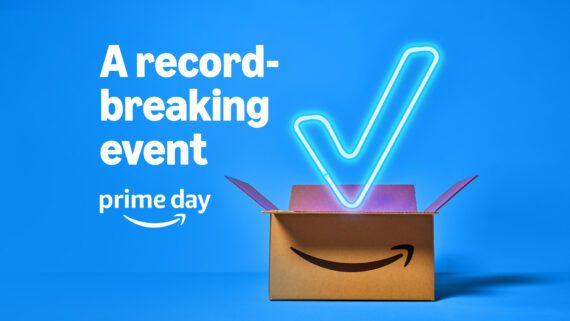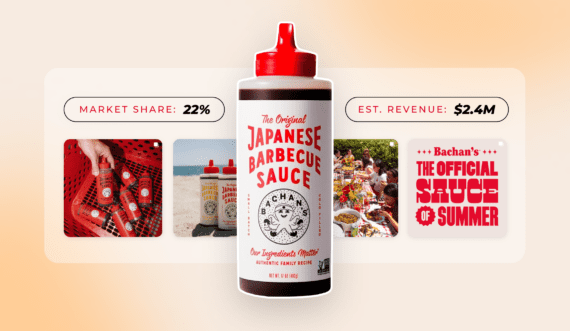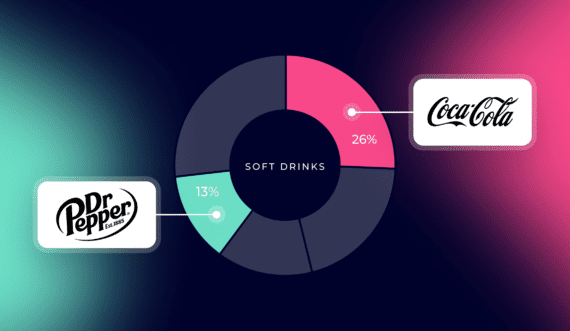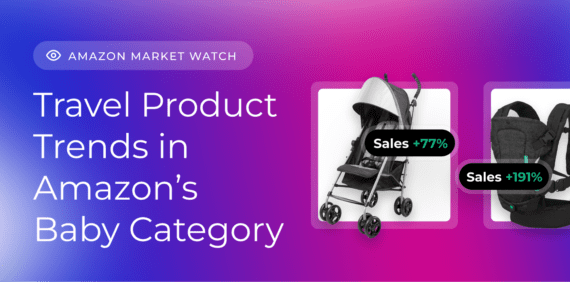Content
expand_moreWhen aspiring entrepreneurs first discover selling on Amazon, one of the big questions they inevitably ask is “how much does it cost to sell on Amazon?”
After all, if you’re going to sell on the world’s largest e-commerce network, you want to make sure that you’re going to profit.
2024 FBA Fee Updates: Amazon announced a number of changes to U.S. referral and Fulfillment by Amazon fees for 2024. Please read below to learn more about each update.
Calculate your Amazon FBA fees for FREE.
Jungle Scout’s FREE Amazon FBA fees calculator is a great way to figure out if the cost to sell on Amazon is worth it for a specific product.
FBA fees all Amazon sellers must pay
Whether you are an FBA or FBM seller, these are the Amazon seller fees you have to pay in order to get started.
Please see below for more information on all of the changes that will be made in 2024.
- 2024 FBA fulfillment fee changes
- 2024 US Referral and FBA fee changes
- 2024 FBA monthly storage fee and aged inventory surcharge changes
- 2024 FBA New Selection program changes
- 2024 FBA fee changes for removals, disposals, and manual processing fee
Referral fees
A referral fee is the “commission” paid to Amazon for each item sold on their platform. Typically, this fee is a flat percentage, often 15% or less.
However, you don’t have to pay these fees upfront. Instead, referral fees are taken out of your Amazon account after the sale is made.
2024 referral fee update: Starting January 15, 2024, Amazon will reduce referral fees for apparel products priced below $20. For items priced under $15, they will decrease referral fees from 17% to 5%. For products priced between $15 and $20, they will decrease referral fees from 17% to 10%.
Here is the current list of Amazon’s referral fees:
| Categories | Amazon deducts the greater of the applicable referral fee percentage or applicable per-item minimum referral fee. See “Referral fees” notes above. | |
| Referral fee percentages | Applicable minimum referral fee (applied on a per-unit basis unless otherwise noted) | |
| Amazon Device Accessories | 45% | $0.30 |
| Amazon Explore | 30% for Experiences | $2.00 |
| Automotive and Powersports | 12% | $0.30 |
| Baby Products | 8% for products with a total sales price of $10.00 or less, and 15% for products with a total sales price greater than $10.00 | $0.30 |
| Backpacks, Handbags, and Luggage | 15% | $0.30 |
| Base Equipment Power Tools | 12% | $0.30 |
| Beauty, Health and Personal Care | 8% for products with a total sales price of $10.00 or less, and 15% for items with a total sales price greater than $10.00 | $0.30 |
| Business, Industrial, and Scientific Supplies | 12% | $0.30 |
| Clothing and Accessories | 17% | $0.30 |
| Collectible Coins | 15% for the portion of the total sales price up to $250.00, 10% for any portion of the total sales price greater than $250.00 up to $1,000.00, and 6% for any portion of the total sales price greater than $1,000.00. | $0.30 |
| Compact Appliances | 15% for the portion of the total sales price up to $300.00, and 8% for any portion of the total sales price greater than $300.00 | $0.30 |
| Computers | 8% | $0.30 |
| Consumer Electronics | 8% | $0.30 |
| Electronics Accessories | 15% for the portion of the total sales price up to $100.00, and 8% for any portion of the total sales price greater than $100.00 | $0.30 |
| Entertainment Collectibles | 20% for the portion of total sales price up to $100.00, 10% for the portion of total sales price greater than $100.00, up to $1,000.00, and 6% for the portion of total sales price greater than $1,000.00 | — |
| Everything Else | 15% | $0.30 |
| Eyewear | 15% | $0.30 |
| Fine Art | 20% for the portion of the total sales price up to $100.00, 15% for the portion of the total sales price greater than $100.00 up to $1,000.00, 10% for the portion of the total sales price greater than $1,000.00 up to $5,000.00, and 5% for the portion of the total sales price greater than $5,000.00 | — |
| Footwear | 15% | $0.30 |
| Full-Size Appliances | 8% | $0.30 |
| Furniture | 15% for the portion of the total sales price up to $200.00, and 10% for any portion of the total sales price greater than $200.00 | $0.30 |
| Gift Cards | 20% | — |
| Grocery and Gourmet | 8% for products with a total sales price of $15.00 or less, and 15% for products with a total sales price greater than $15.00 | — |
| Home and Kitchen | 15% | $0.30 |
| Jewelry | 20% for the portion of the total sales price up to $250.00, and 5% for any portion of the total sales price greater than $250.00 | $0.30 |
| Lawn and Garden | 15% | $0.30 |
| Lawn Mowers and Snow Throwers | 15% for products with a total sales price of up to $500.00 8% for products with a total sales price greater than $500.00 | $0.30 |
| Mattresses | 15% | $0.30 |
| Media – Books, DVD, Music, Software, Video | 15% | — |
| Musical Instruments and AV Production | 15% | $0.30 |
| Office Products | 15% | $0.30 |
| Pet Products | 15%, except 22% for veterinary diets | $0.30 |
| Sports and Outdoors | 15% | $0.30 |
| Sports Collectibles | 15% for the portion of the total sales price up to $100.00 10% for any portion of the total sales price greater than $100.00 up to $1,000.00 6% for any portion of the total sales price greater than $1,000.00 | — |
| Tires | 10% | $0.30 |
| Tools and Home Improvement | 15% | $0.30 |
| Toys and Games | 15% | $0.30 |
| Video Game Consoles | 8% | — |
| Video Games and Gaming Accessories | 15% | — |
| Watches | 16% for the portion of the total sales price up to $1,500.00, and 3% for any portion of the total sales price greater than $1,500.00 | $0.30 |
Use Jungle Scout to get an accurate estimate of Amazon’s fees while doing product research and figure out your cost to sell on Amazon.
Note: Learn how to preview your fees using Amazon’s Fee Preview Report.
Individual per-item fees or subscription fees
There are two types of seller accounts on Amazon: individual and professional.
Depending on the type of seller account you have, you will have to pay either the individual per-item fee Amazon charges you each time you make a sale transaction, or you will have to pay a monthly subscription fee.
1. Individual seller per-item fee
Individual sellers pay a flat $0.99 for each sales transaction, in lieu of a monthly subscription fee.
Like referral fees, these fees are deducted only after a sale is made on Amazon. They are then subtracted from the amount Amazon places into your Amazon account balance.
You do not have to pay the fee upfront.
2. Professional seller subscription fee
Rather than paying a fee per product sold, professional sellers pay a monthly subscription fee of $39.99. But, like the fees an individual seller pays, subscription fees are taken from your Amazon account balance.
If you don’t have funds in your account, then the amount is deducted from your credit card.
3. Refund administration fees
If a shopper requests a refund on a product for which you have already been paid and Amazon issues the refund, Amazon charges a fee to process it. The fee is either $5.00 or 20% of the refunded charge, whichever is less.
As with the other fees mentioned, the refund administration fees are immediately paid through your Amazon account balance, or charged to your credit card if your account doesn’t have the money to cover it.
Fees that only FBA sellers pay
If you are an FBA seller, these are the fees you’ll pay on Amazon.
1. FBA fees
As an FBA seller, you do not have to pay for shipping, handling, or packaging to ship your goods. Instead, Amazon’s fulfillment employees pick, pack, and ship your products for you.
To cover these costs, you are charged Amazon seller fees, which is determined by the size and weight of your product.
Starting on February 5, 2024, Amazon will introduce new, more granular rate cards for standard-sized products and introduce large bulky and extra-large size tiers.
Starting on April 15, 2024, FBA fulfillment fee rates will be reduced for standard-sized and large bulky-sized products. The chart below shows the new rates and size tiers that will apply starting on February 5, 2024, along with new rates starting on April 15, 2024.
Below are charts showing Amazon’s current FBA fees:
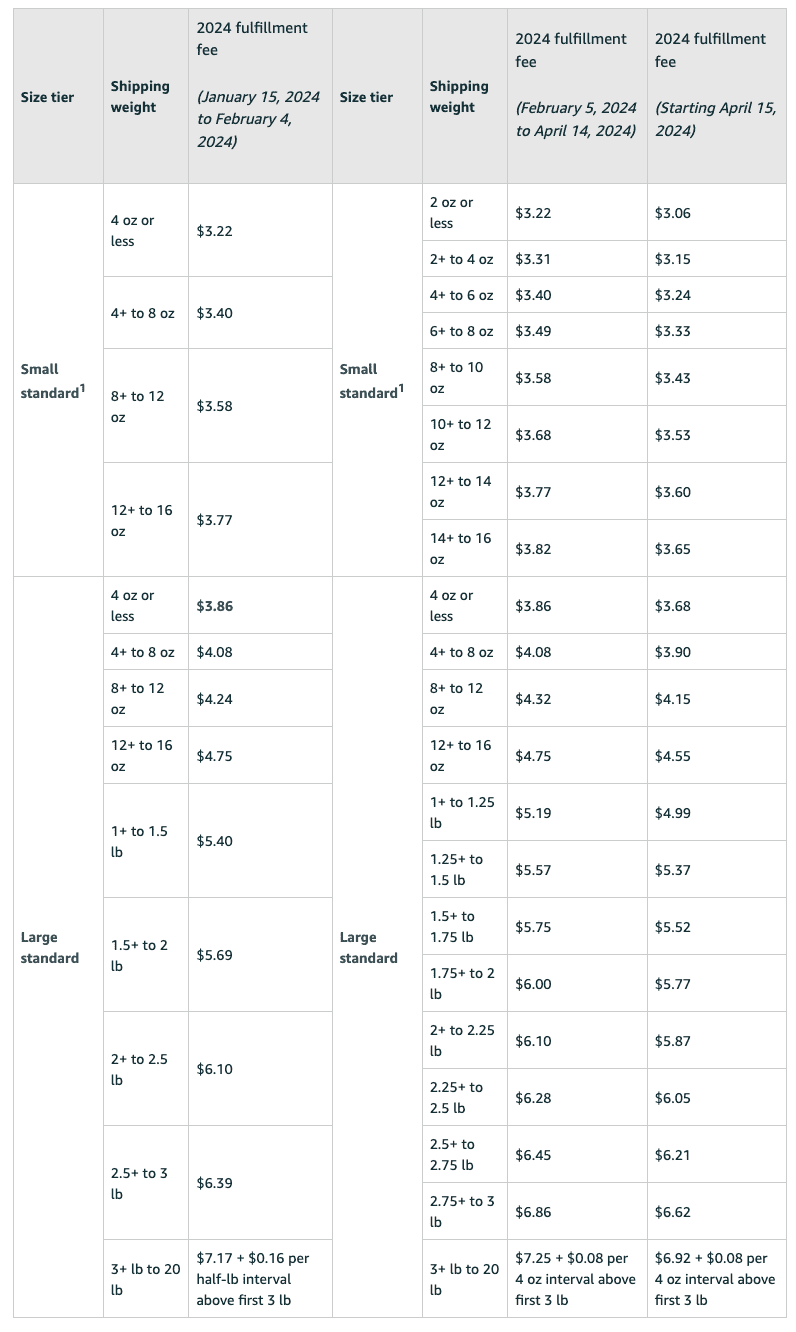
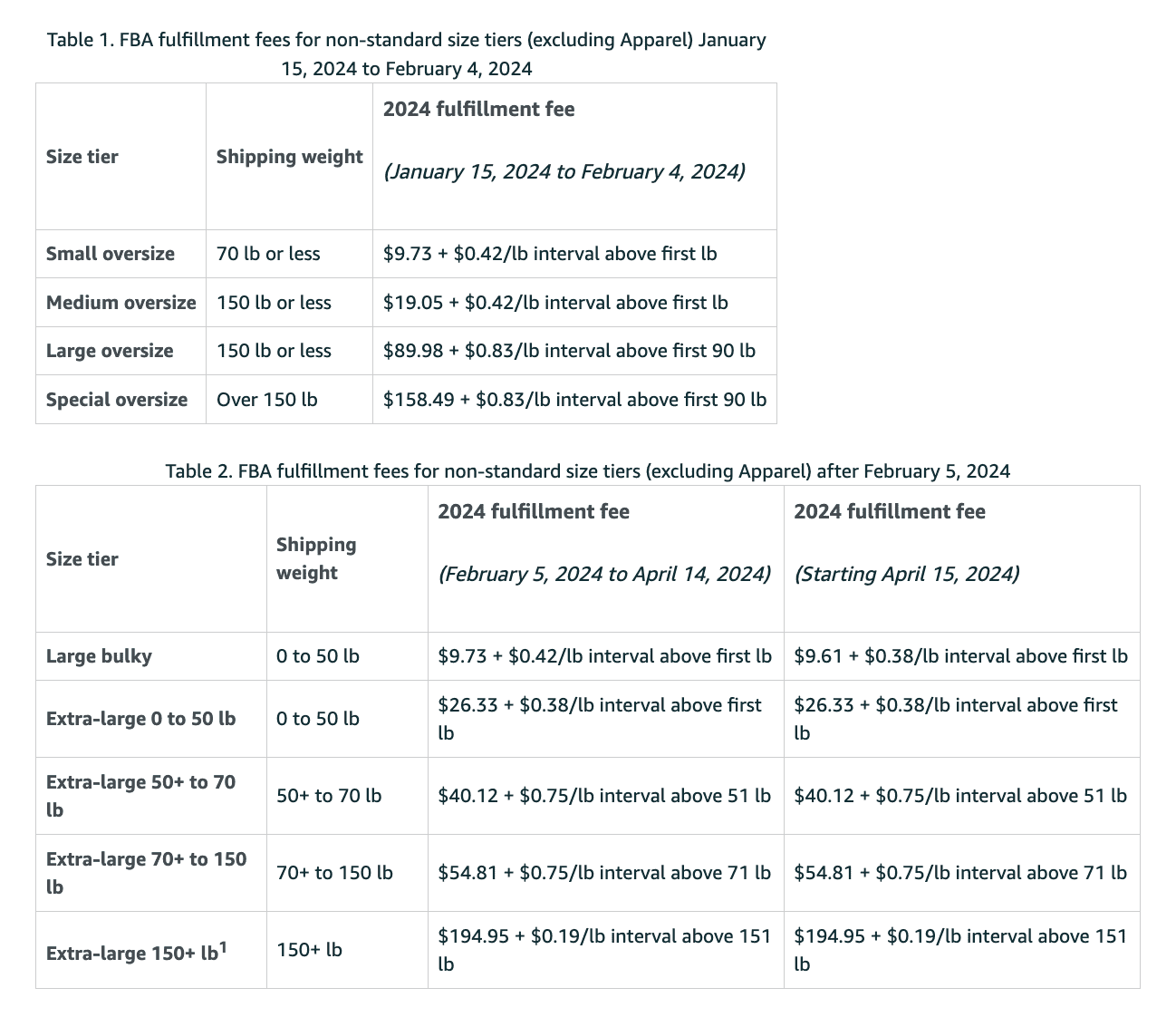
FBA fulfillment fees for Apparel
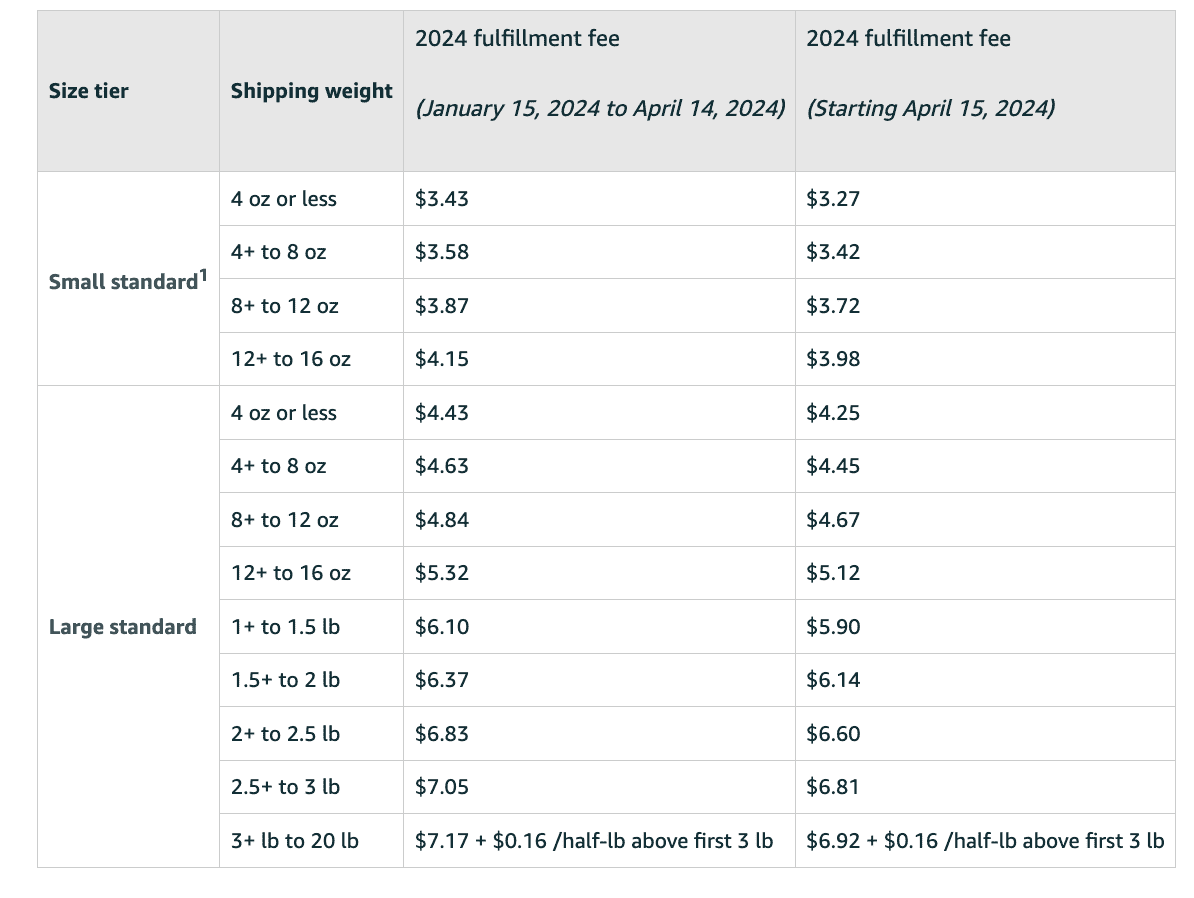
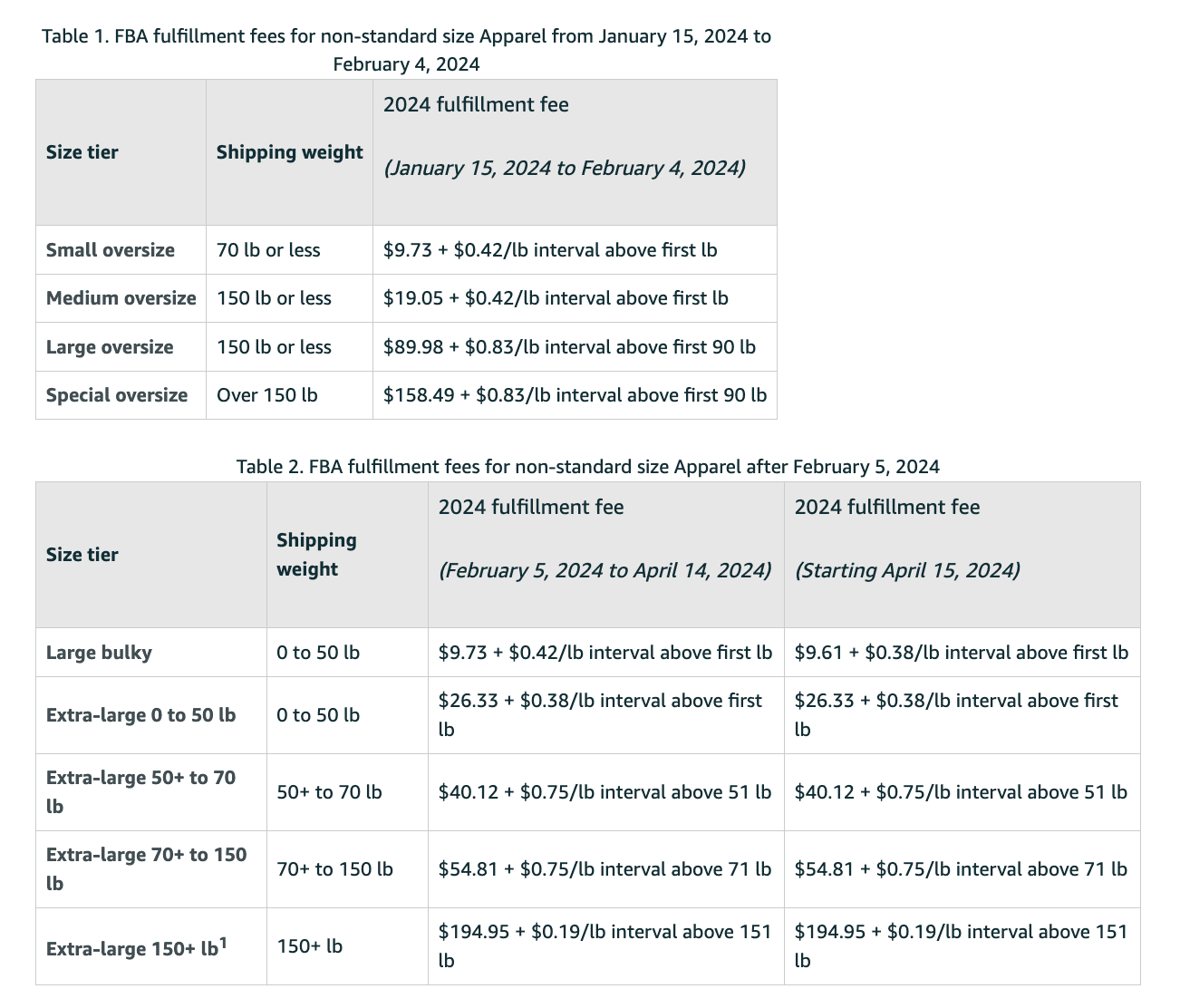
Fulfillment fees for dangerous goods
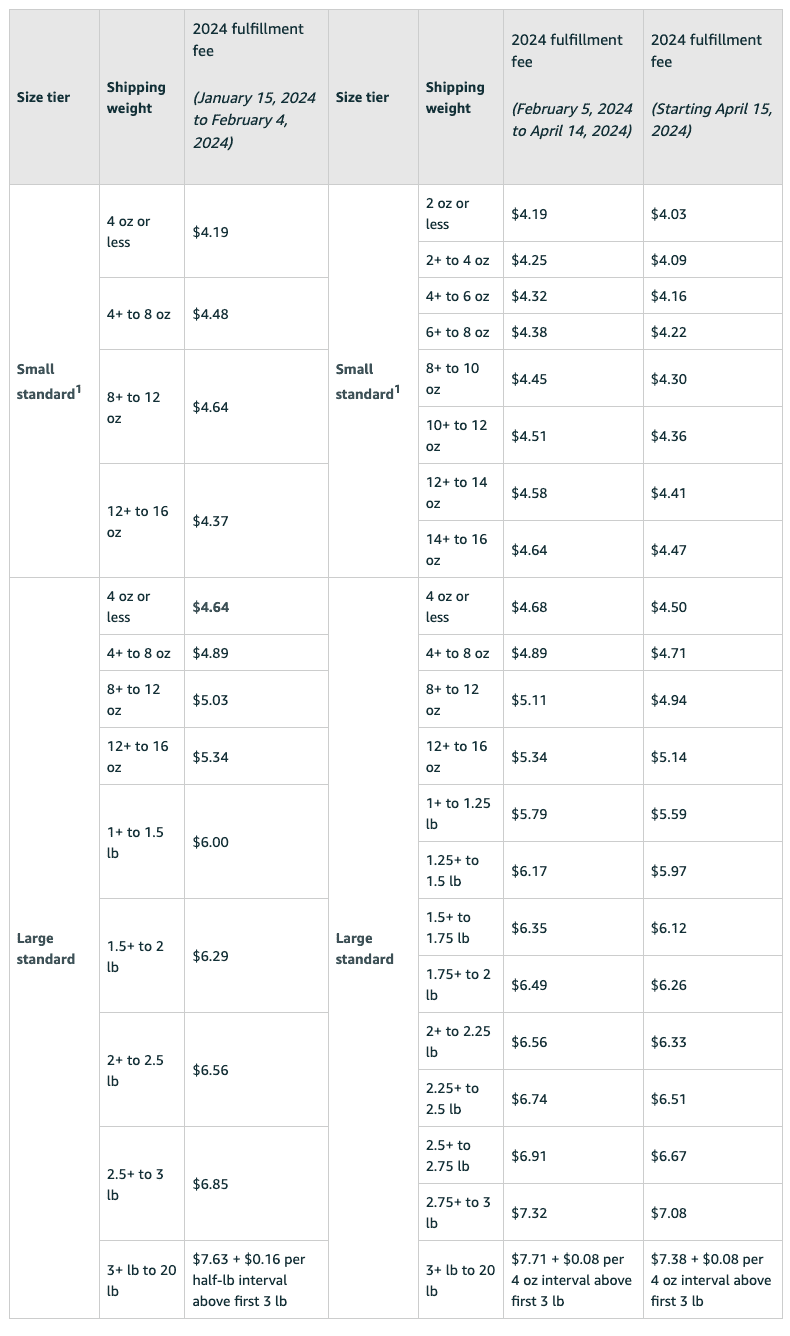
2. FBA storage fees
Because your products are being stored in Amazon’s fulfillment centers, Amazon charges storage fees to maintain your inventory.
There are two types of FBA storage fees: monthly and long-term.
2024 changes: According to Amazon, “Starting April 1, 2024, off-peak monthly inventory storage fees (January-September) will be reduced by $0.09 per cubic foot for standard-size products. This change will first be reflected in May 2024 charges for storage that occurs in April 2024. There will be no change to off-peak monthly inventory storage fees for large bulky or extra-large (previously called oversized) products and peak monthly inventory storage fees for standard-size, large bulky, and extra-large products.”
3. Monthly storage fees
If you have inventory in an Amazon warehouse at the end of the month, Amazon charges you a monthly storage fee. These are either subtracted from your account balance or added to your credit card if and when your Amazon account doesn’t have enough funds to cover the fee.
These are the current monthly storage fees for storing products in Amazon’s fulfillment centers:
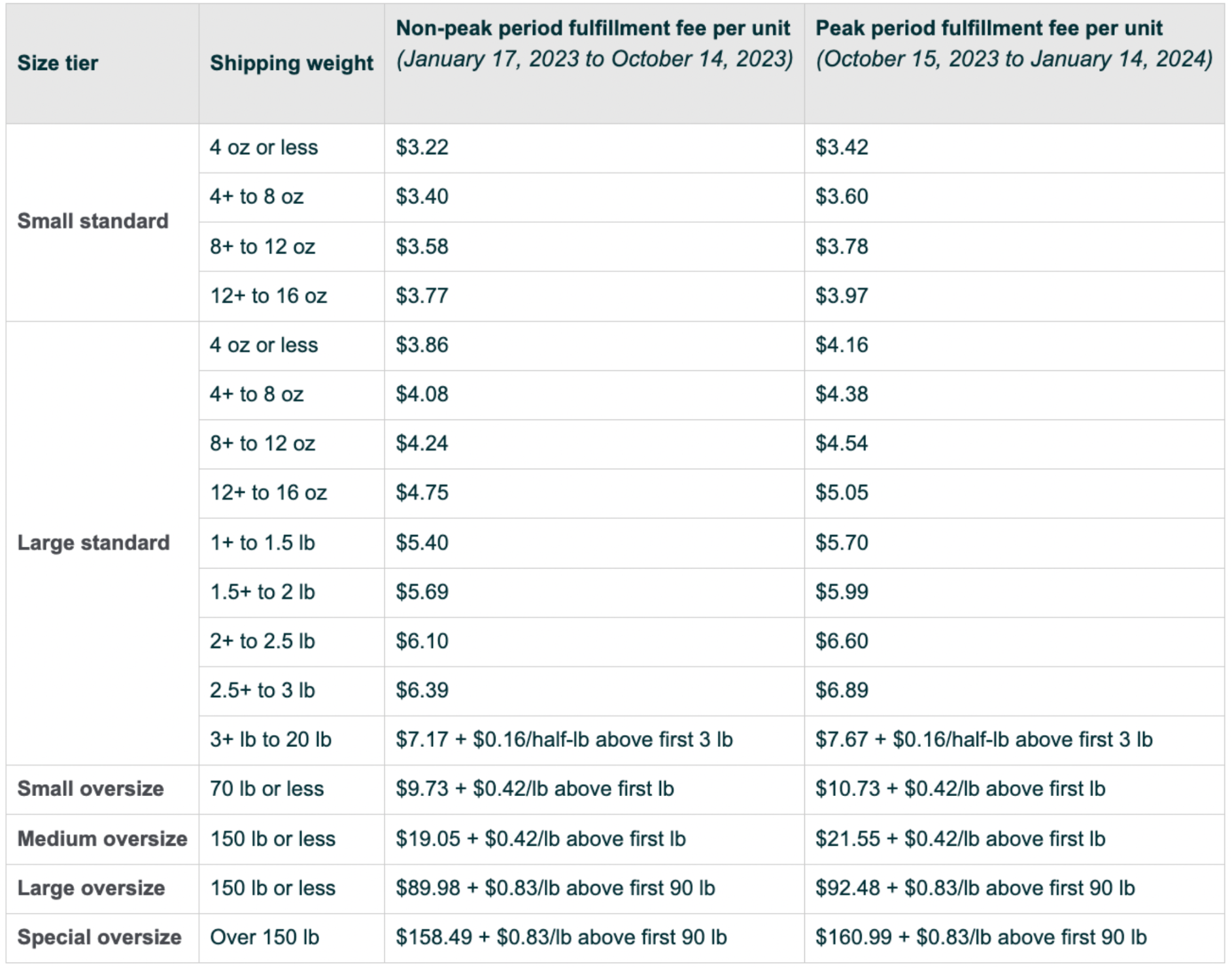
On April 1, 2023, Amazon introduced a storage utilization surcharge for the monthly storage fee. The surcharge is based on the storage utilization ratio, which is the ratio of your average daily inventory volume stored in cubic feet divided by the average daily shipped volume in cubic feet over the trailing 13 weeks. Amazon calculates the storage utilization ratio on the last day of a given month.
2024 changes to the storage utilization surcharge: According to Amazon, “Starting April 1, 2024, we will introduce more granular fee tiers to the storage utilization surcharge and will start applying the fee to Professional sellers with a storage utilization ratio above 22 weeks. We will exclude inventory aged between 0 and 30 days from the surcharge. This change will first be reflected in May 2024 charges for storage that occurs in April 2024.”
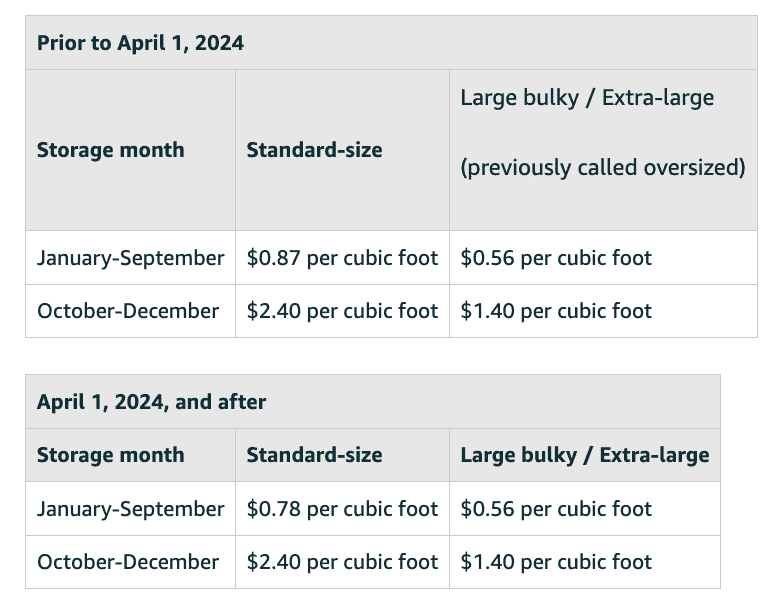
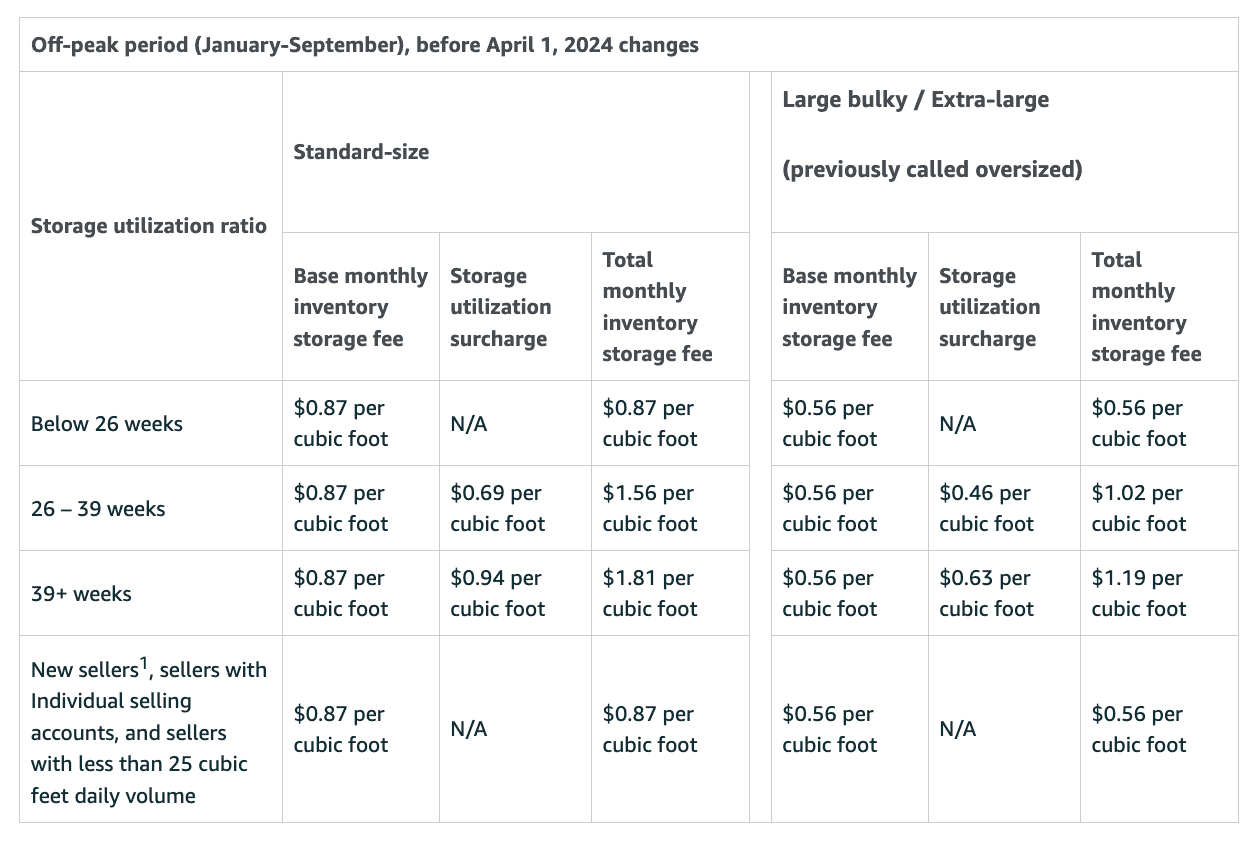
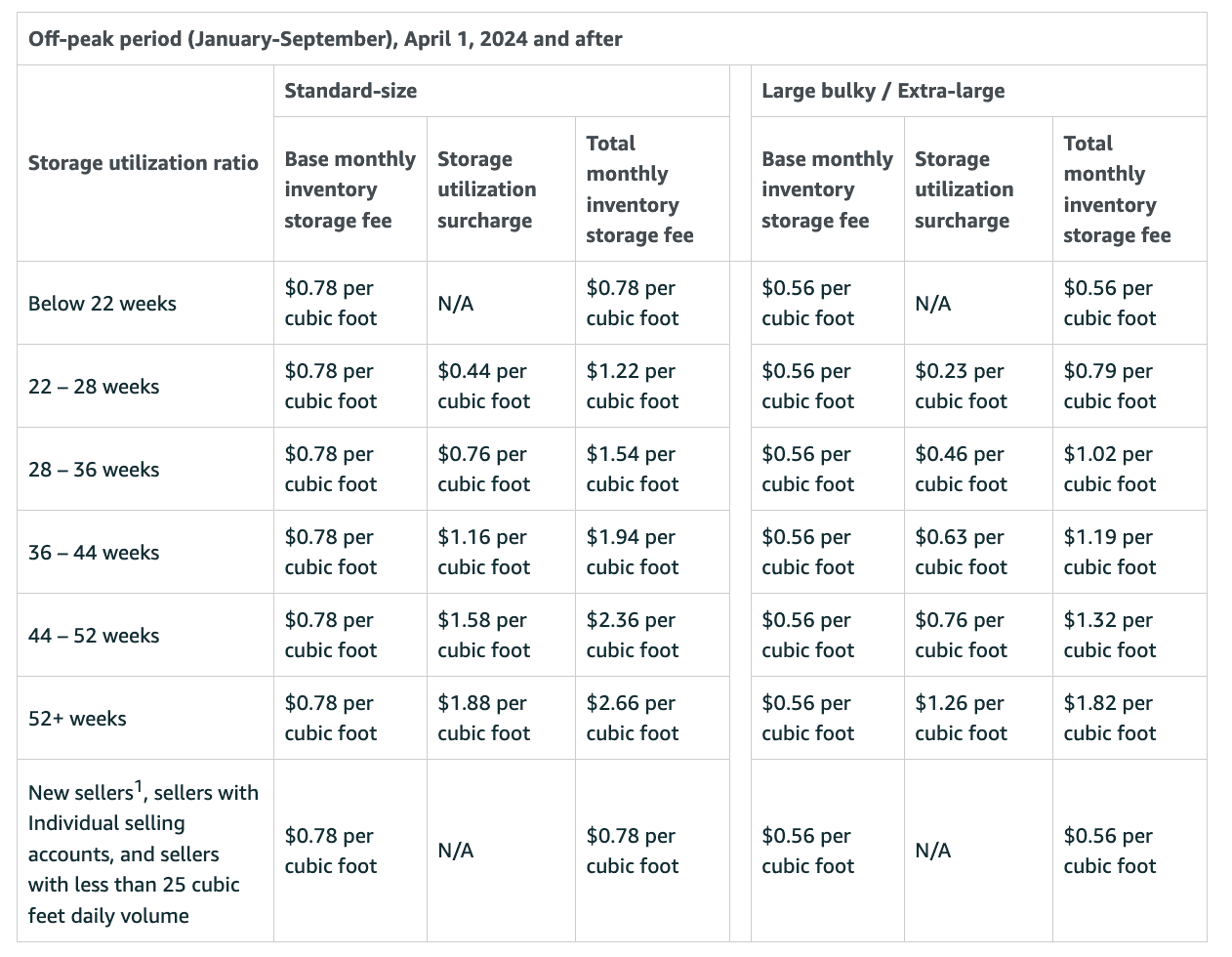
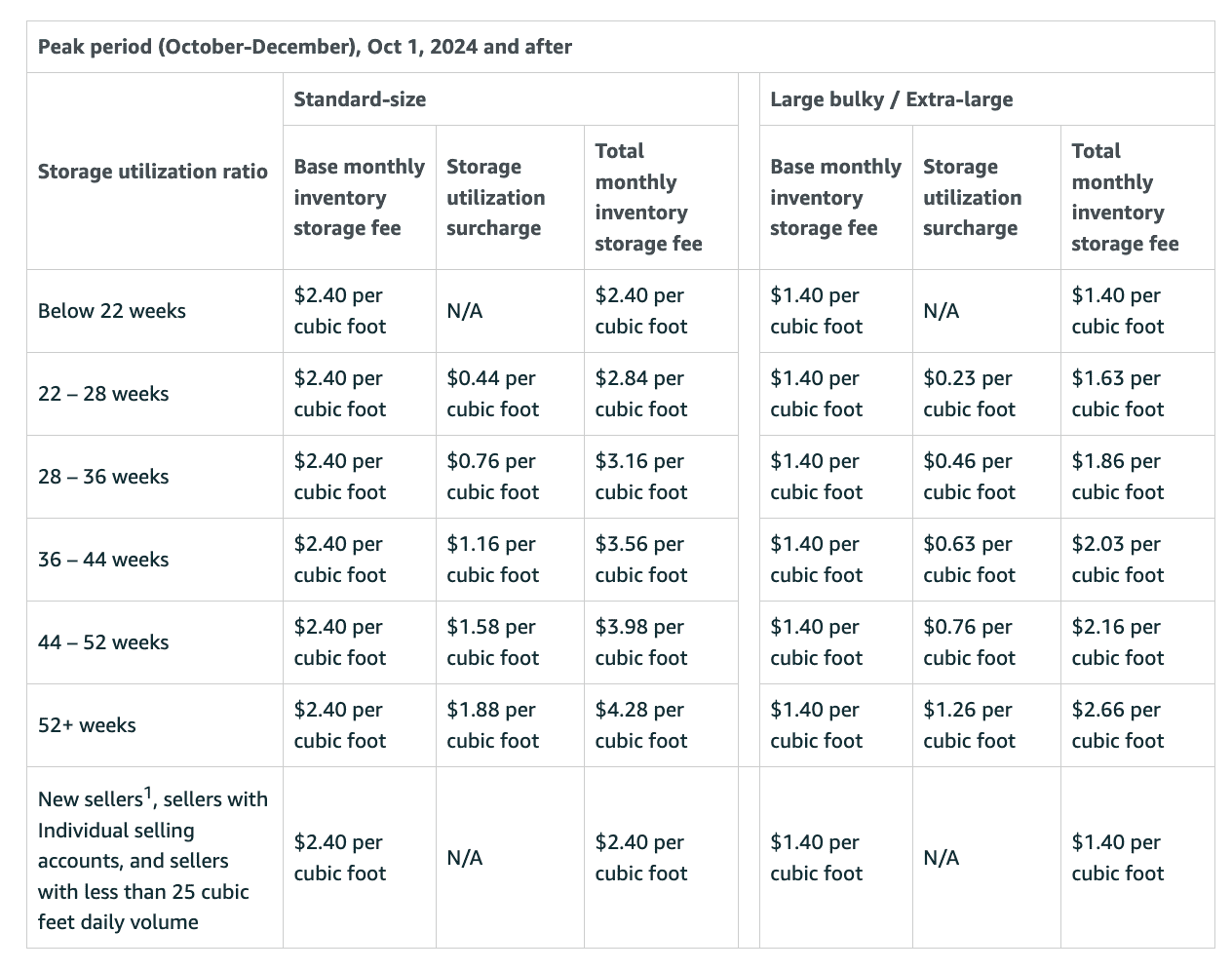
FBA aged inventory surcharge (previously known as long-term storage fees)
From Amazon:
2024 changes to FBA aged inventory surcharge: “Starting February 15, 2024, the aged inventory surcharge for inventory stored between 271 to 365 days will increase. Surcharges will remain unchanged for inventory stored between 181 to 270 days, and inventory stored 365 days or more.”
Amazon conducts inventory clean-ups on the 15th of each month. During the clean-up, Amazon records any products that have sat in their fulfillment centers for 181 days or longer.
For those items stored for 181 days or longer, Amazon will charge the seller an aged inventory surcharge, depending on the age of the products stored.
Like monthly storage fees, the aged inventory surcharge is deducted on the same date each month from your Amazon seller account balance or from the credit card which you put on file when you registered as an Amazon seller.
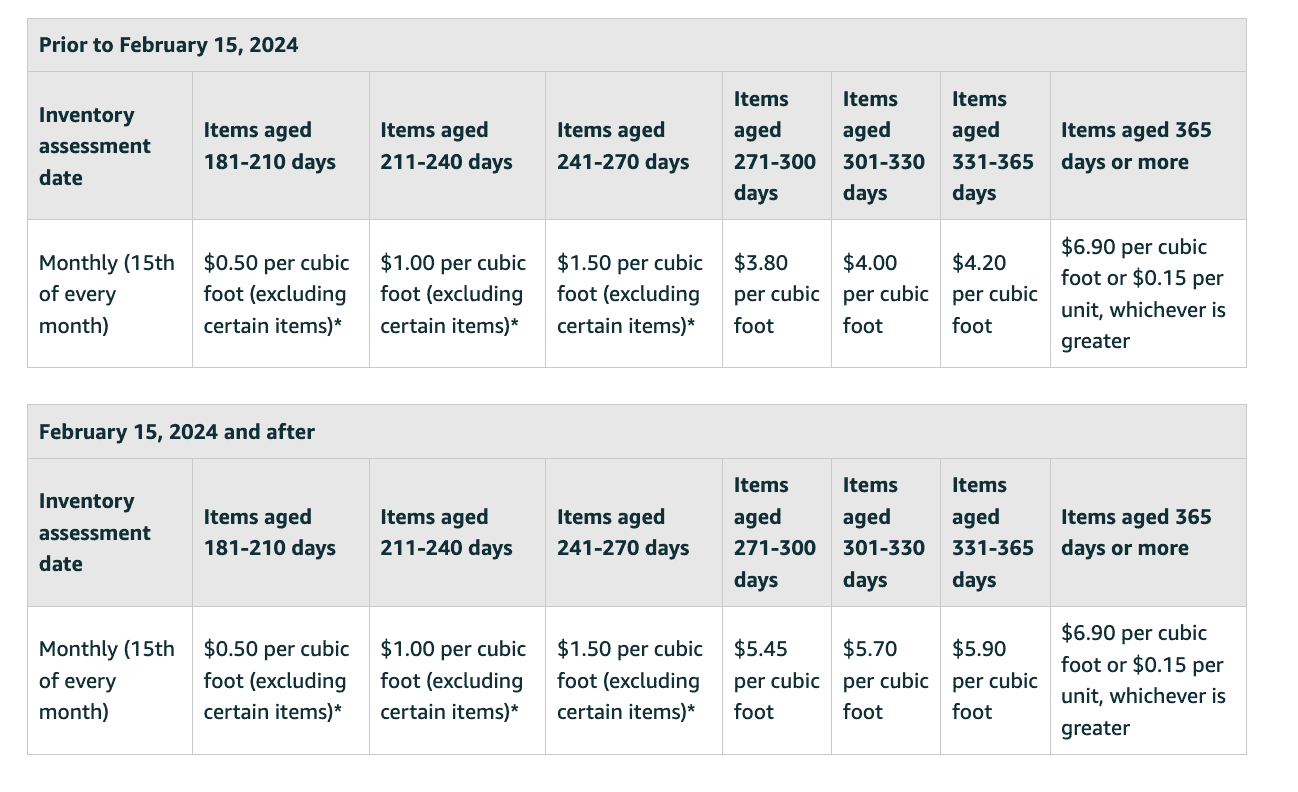
Note: During Amazon’s busy seasons, these fees will go up to persuade sellers to remove slow-selling inventory.
Low-level inventory fee
Effective April 1, 2024, Amazon will introduce a new low-level inventory fee that will apply to standard-sized products with consistently low inventory relative to customer demand.
According to Amazon, “When sellers carry low inventory relative to unit sales, it inhibits our ability to distribute products across our network, degrading delivery speed and increasing our shipping costs.
The low-inventory-level fee will only apply if a product’s inventory levels relative to historical demand (known as historical days of supply) is below 28 days. We will only charge the low-inventory-level fee when both the long-term historical days of supply (last 90 days) and short-term historical days of supply (last 30 days) are below 28 days (4 weeks). For example, if a product’s short-term historical days of supply is above 28 days but long-term historical days of supply is below 28 days, the low-inventory-level fee won’t apply.
We will calculate the historical days of supply metric at the parent-product level, and will add the low-inventory-level fee to the FBA fulfillment fee for all shipped units of eligible products. Below is the low-inventory-level fee rate card.”
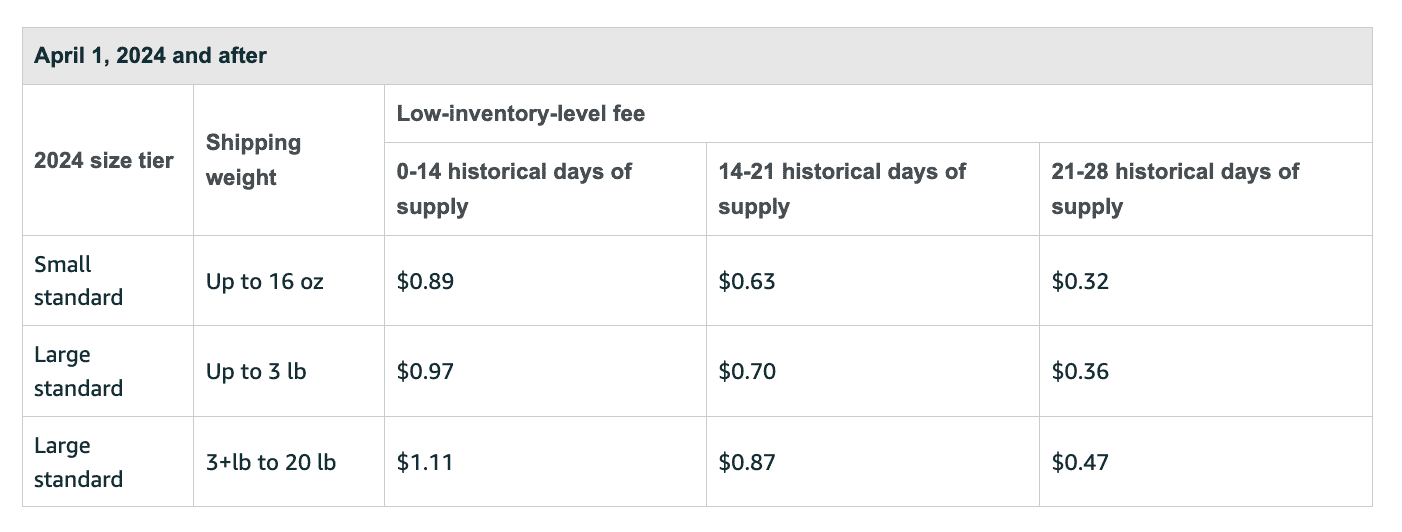
FBA inbound placement service fee
Effective March 1, 2024, Amazon will implement an FBA inbound placement service fee for standard and large bulky-sized products to reflect the cost of distributing inventory to fulfillment centers close to customers.
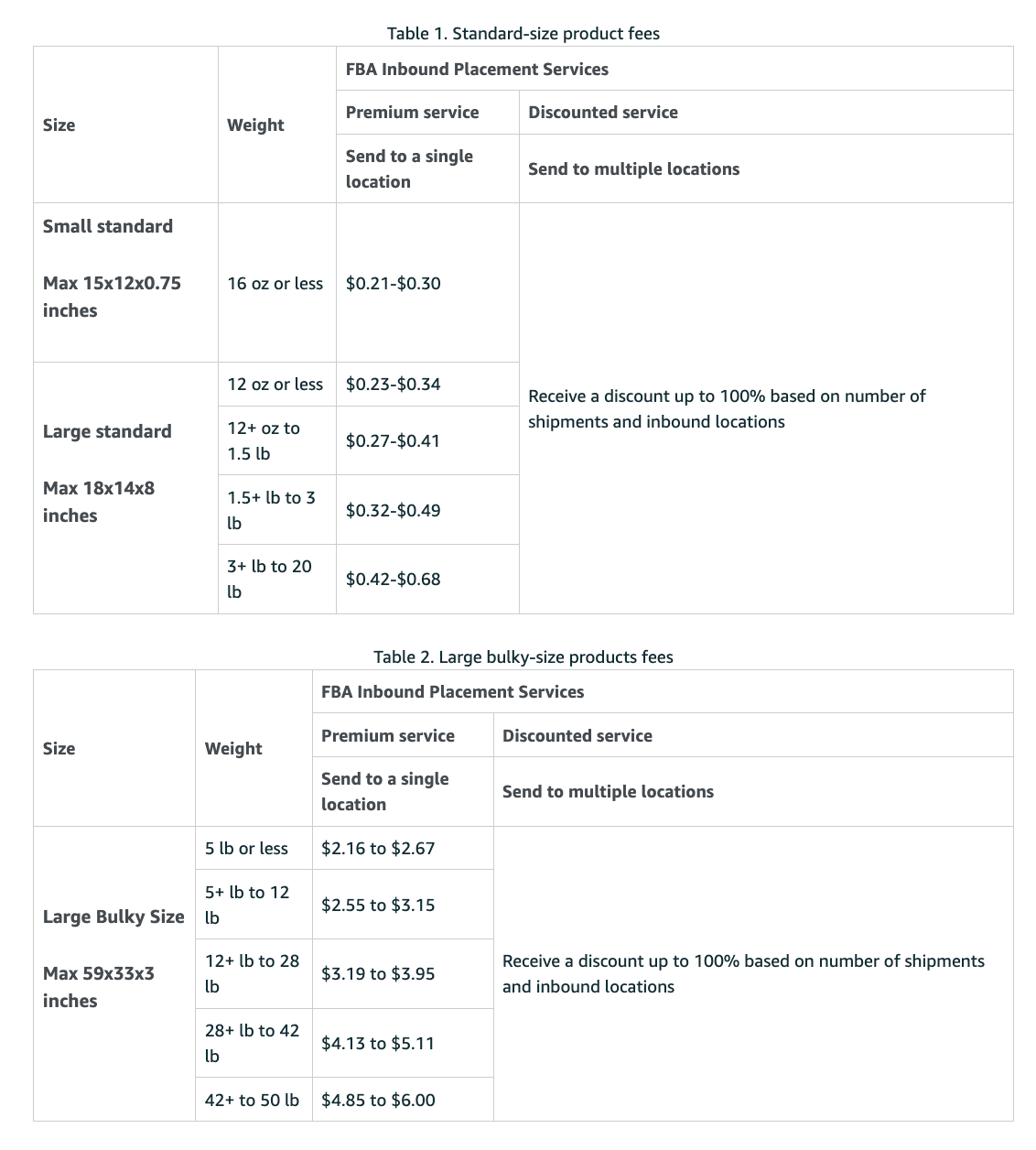
Fees that only FBM sellers pay
FBM sellers do not have their own separate fees like FBA sellers do. However, the cost to sell on Amazon as an FBM seller is often higher than that of an FBA seller, since FBM sellers have to store, pick, pack, and ship their own products. They also have to handle their own customer service.
For example, if I were selling a stainless steel mug as an FBA seller for $30, I would pay $4.50 in referral fees and $5.06 in FBA fees.
If I were to sell the same product as an FBM seller, I would have to factor in the shipping costs (estimated at $6), and the cost of packaging (estimated at $1), bringing the total fulfillment cost to roughly $7 (This is before any labor or storage costs).
In this scenario, it would cost more to ship with FBM vs. FBA.
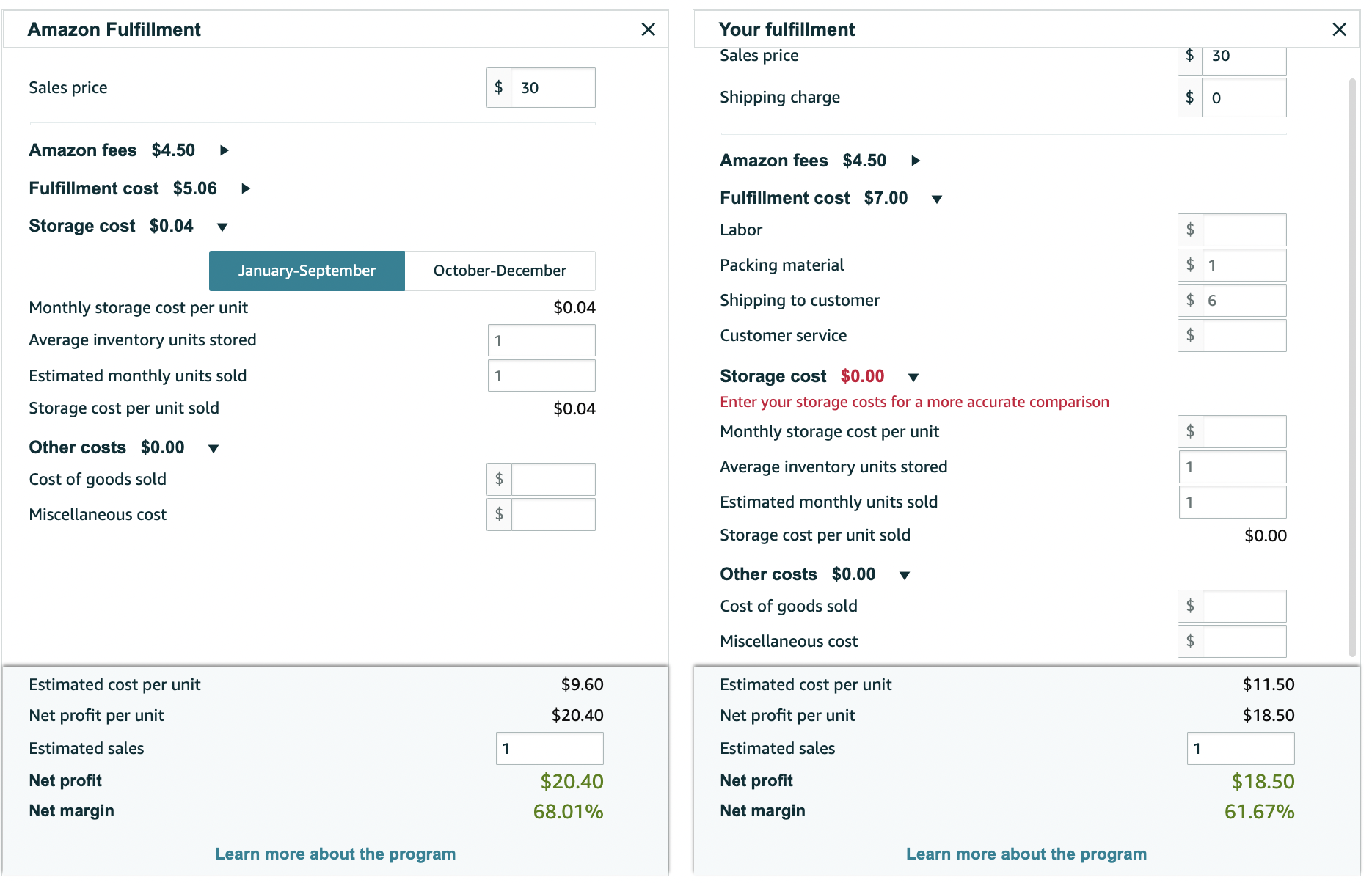
To compare FBA and FBM costs, check out Amazon’s free FBA Revenue calculator (pictured above).
Opportunity costs: What does your labor cost you?
When choosing a fulfillment method for your business — Amazon FBM or Amazon FBA — you need to consider the cost of labor.
As an FBA seller, the cost of labor to ship your products is factored into the FBA fee. FBM sellers, on the other hand, must determine cost of labor by measuring their opportunity costs. (Opportunity costs are a way of estimating costs based on the time spent on an activity.)
The easiest way to estimate opportunity costs for selling on Amazon is to estimate what you would be paid on an hourly basis as an employee and then multiply that by the amount of time it takes you to perform the action.
For example, if you earn $40/hour at your day job and it takes you 10 minutes to fulfill a product that you sold on Amazon, the opportunity cost is $6.67.
So, while you aren’t actually paying a fee or paying someone else, it is costing you time, which costs you money.
Miscellaneous service fees
The last group of fees mentioned in this article are fees that only a few sellers must pay. These fees are paid regardless if you are an Amazon FBA or FBM seller.
1. Closing fees
Media products such as books, DVDs, CDs, and Blu-Ray, come with a flat $1.80 fee per sale, and only sellers who focus on selling these products need to worry about these fees.
Like the referral fee, the closing fees are deducted from the proceeds of the sale so you do not need to pay these fees in advance.
2. High-volume listing fee
Sellers with thousands of ASINs may be required to pay a monthly flat fee of $0.005 per eligible ASIN. But, unless you have more than 100,000 products listed, you won’t have to worry about these fees.
High volume listing fees are paid at the same time as FBA storage fees. These fees are deducted from your Amazon account balance. If you don’t have funds in your account balance, then the amount is deducted from your credit card.
3. Rental book service fees
Sellers who rent textbooks on Amazon must pay a $5.00 rental book service fee for each textbook rental that they sell.
Like referral fees, rental book service fees are deducted at the time of a sale and you will not need to pay these fees in advance.
Jungle Scout’s tools such as Product Database and Extension can help you estimate the the cost to sell on Amazon for specific products. Click the link below to learn more.
How have Amazon seller fees affected your business? Were they a deciding factor in whether or not you chose to sell a specific product? Let us know in the comments below!
Manage your Amazon fees with Jungle Scout.
Learn more about how you can use Jungle Scout to launch, grow, and run your Amazon business.
Brian Connolly is an Amazon seller, ecommerce expert, and writer for Jungle Scout. He lives in the New Jersey Shore area with his wife and cat. When he isn’t writing advice online for aspiring and experienced Amazon sellers for Jungle Scout, he spends his free time boating, fishing, and selling boating-themed items on his Amazon business.

